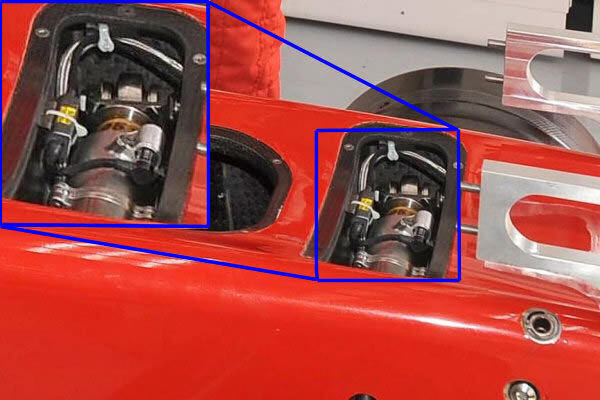J-damper - Inerter
Every day more complex suspension in an F1 car has a number of devices to counter loads fed into the chassis, in order to maintain the ideal tire contact patchwith track. Springs and dampers are easy understandible, but spring effects from the high profile tires are not so easy to control. Their spring effect goes undamped and is largely out of the control of the teams in setting up the car. If you are able to counteract these uncontrolled forces in a suspension will allow the tire to main better contact with the ground for more consistent grip.
During development of inerter, McLaren invented a decoy name for the inerter (the "J-damper") to keep the technology secret from its competitors for as long as possible. Letter 'J' stands for 'jounce' which is an amalgamation of 'jump' and 'bounce'
J-damper is the legal version of mass damper and is found in the third, transverse damper on the rear suspension of the cars. Reacting to the acceleration of the suspension, the Inerter absorbs the loads that would otherwise not be controlled by the velocity sensitive conventional dampers.
J-damper absorbs excess energy from tires and suspension to make the load through the contact patch more predictable and hence more stable at the point in time when stability is most crucial. Normal damper dissipate energy mostly trough heat, and J-damper absorbs energy.
Mass inside J-damper is attached to a threaded shaft within the transverse damper so it is effectively out of sight.
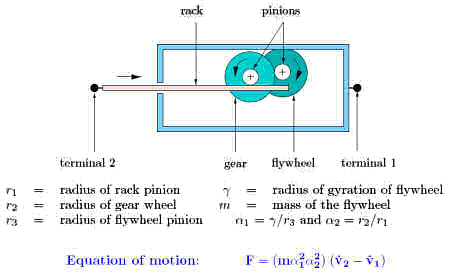
The inerter is a device which provides a force proportional to the relative acceleration between its attachment points ("terminals") which must be freely and independently movable in space. A typical realization incorporates a flywheel which rotates in proportion to the relative displacement between the terminals. The first publication on the subject, in which the word "inerter" was coined, was: "Synthesis of Mechanical Networks: The Inerter" (M.C. Smith, IEEE Transactions on Automatic Control, Volume 47, Number 10, Pages 1648- 1662, October 2002). A patent on the device had previously been filed by the Cambridge University.
One of the principal motivations for the introduction of the inerter is the synthesis of passive mechanical networks. The fact that the mass element, together with the spring and damper, is insufficient to realize the totality of passive mechanical impedances, can be seen using the forcecurrent analogy between mechanical and electrical circuits. The standard analogies between mechanical and electrical networks are universally familiar to students and engineers alike. The basic modelling elements have the following correspondences:
- spring = inductor
- damper = resistor
- mass = capacitor
where force relates to current and velocity to voltage. It is known that the correspondence is perfect in the case of the spring and damper. A fact which is also known, but frequently glossed over, is that there is a restriction in the case of the mass. All the above elements except the mass have two "terminals" (for a mechanical
element the terminals are the attachment points which should be freely and independently movable in space). In contrast, the mass element has only one such terminal—the centre of mass. It turns out that the mass element is analog to a grounded electrical capacitor.
The J-Damper is in fact a spinning mass on the damper rod inside a damper body. The inerter looks superficially like a conventional shock absorber, with an attachment point at each end. For example, one end may be attached to the car body and the other to the suspension assembly. A plunger slides in and out of the main body of the inerter as the car moves up and down. This causes the rotation of a flywheel inside the device in proportion to the relative displacement between the attachment points.
The result is that the flywheel stores rotational energy as it spins. In combination with the springs and dampers, the inerter reduces the effect of the oscillations and thus helps the car to retain a better grip on the road.
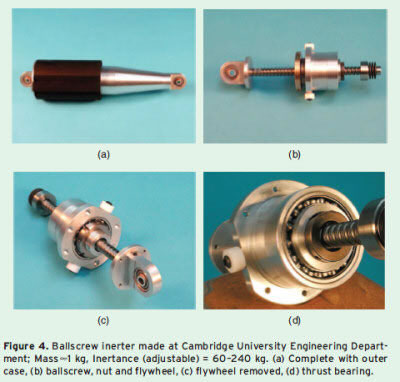 Looks like no any springs or hydraulics or MR fluid is involved. It works much like the Renault's well known Mass damper to take the energy from the tires movement to maximize contact patch/area/load.
Looks like no any springs or hydraulics or MR fluid is involved. It works much like the Renault's well known Mass damper to take the energy from the tires movement to maximize contact patch/area/load.
As it's a recognizable part of the suspension (fitted in place of the third damper), works to improve the use of the tires (a suspensions purpose) and works only in response to suspension loads, it may be seen as legal. The fact that the device is light, small and well contained compared to the bigger masses placed in the nose cone of Renault, probably means this will remain legal.
J-damper can't work without rest of suspension system (dampers and springs).
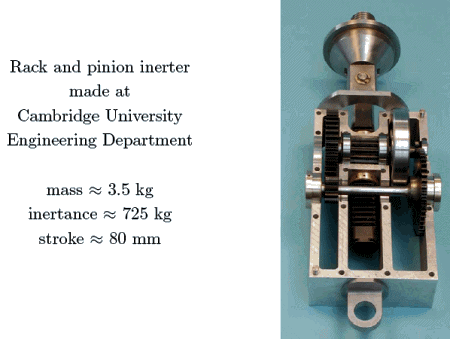
Standard suspension systems are based around two components - springs and shock absorbers (dampers). Together, these contribute to the car's ride and handling.
No matter how the system is tuned, however, there is always a compromise taking place between handling, comfort and grip. Even in F1 cars, where comfort is not important, the suspension needs to be set to allow both sensitive handling, which requires a harder suspension, and a good mechanical grip, for which the suspension would normally be softer. The upshot is that there is still some oscillation as the load on the tires varies, which impedes the vehicle's grip and therefore slows it down.
Think of the car's suspension's reaction to the ground as acting in a sine wave motion.
The wave would obviously be damped over time by itself, but this time is to long. The reaction from the ground would cause the j-damper rotating mass to react in a sine wave motion (speeding up it's rotation) and damp over time by itself. The two reactions do not coincide (meaning the car doesn't bounce up while the j-damper speed up), so they counteract each other. Obviously the car's reaction through the suspension outweighs the mass reaction, but the spinning mass will still dampen the car's reaction to the ground through its countering force (offset sine wave).
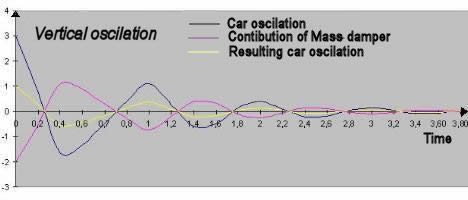
Sine wave with a dampening effect
The suspension device for use in F1 car, code-named the 'J-Damper' has been developed in secret by McLaren and Cambridge University since 2005 under a confidential arrangement between the team and university.
In fact, the device was first conceived by its creator, Professor Malcolm Smith, as long ago as 1997 and raced for the first time by McLaren in 2005, when Kimi Raikkonen achieved a victory for the team May 8, 2005, in Spanish Grand Prix, Circuit de Catalunya, Barcelona.
It is used not only to improve mechanical grip but can offer greater flexibility in a vehicle's suspension system. Looks like that in same time Ferrari was developing same system by themselves, and without any outside help.
J-damper was first time mentioned in public after McLaren/Ferrari and McLaren/Renault spy affairs during 2007.
In one version of the story, it was reported that between Ferrari's technical design files find in McLaren possession , was drawing of Ferrari version of J-damper. Former Ferrari chief mechanic Nigel Stepney is alleged to have handed over the 780-page dossier of information (technical data, drawings and setup data) to McLaren's former chief designer Mike Coughlan. Only very small part of this drawings finished in the end in Renaults hands, but they didn't understand proper functioning of this device.
In second version of the story, inerter featured in the 2007 Formula One "spy scandal", drawings found in Renault hands was actually original McLaren/Cambridge University project drawings, and again it was reported that the Renault engineering team failed to understand the purpose of the device.The FIA World Motor Sport Council considered this matter at a hearing in December 2007. According to the Council finding, "a drawing of McLaren's so-called J-damper was used by Renault to try to have the system that they thought McLaren was using declared illegal. This failed because Renault had certain fundamental misunderstandings about the operation of the J-damper system." A full transcript of the decision is available on the FIA website.
The fact that the J-damper is an inerter was revealed in the Autosport article by Craig Scarborough, a motor sport correspondent from Autosport magazine. Autosport ran an article on May 29, 2008, which revealed the Cambridge connection and that the J-damper was an inerter.
Cambridge Enterprise, the commercialisation office of the University of Cambridge, has now entered into a licence agreement with Penske Racing Shocks enabling Penske to supply inerters to any team in Formula One.
Looks like Ferrari version of inerter device was first time used by Ferrari in the race during Monza GP 2007. During this weekend training and race, both Ferrari drivers have accidents because of problems with rear suspension where J-damper was mounted on place of third shock absorber.
Ferrari inerter fitted on F10 racer, 2010.
